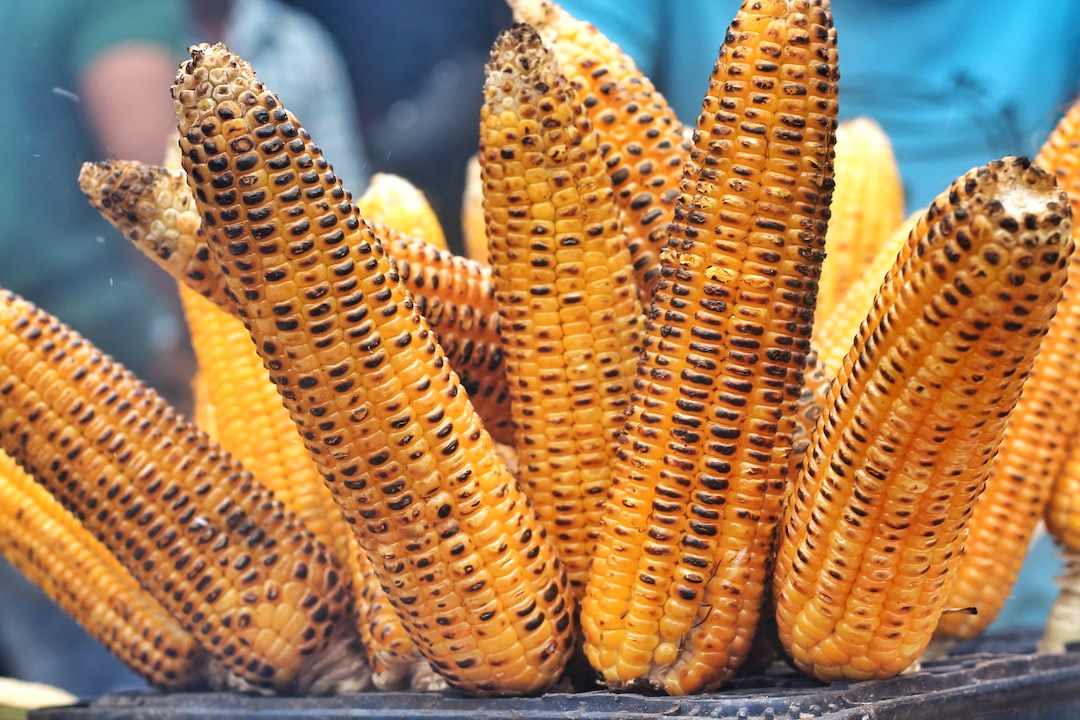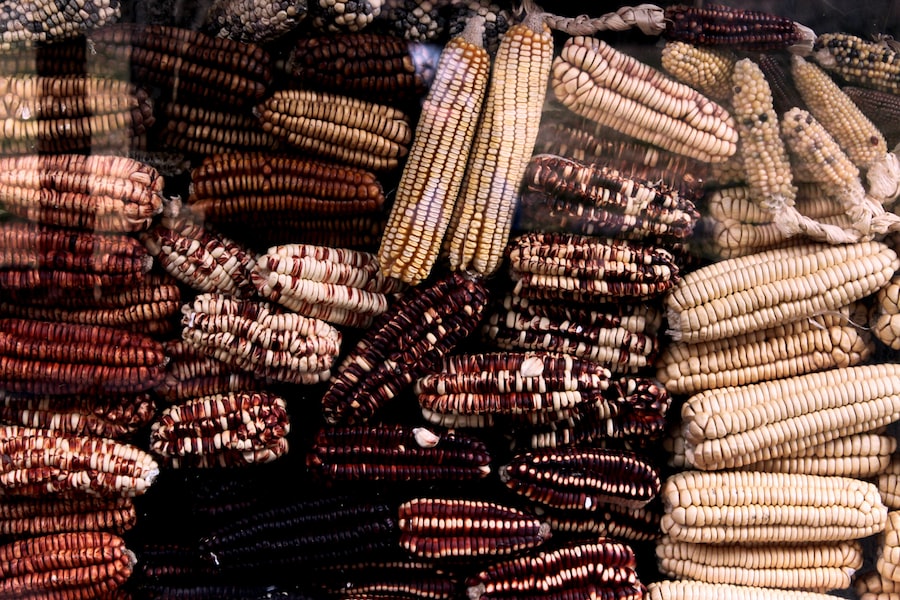Harvest Time: A Guide to Knowing When Corn is Ripe for Picking

Corn harvesting is a crucial step in the agricultural cycle, as it marks the culmination of months of hard work and careful cultivation. Corn, also known as maize, is one of the most widely grown crops in the world and plays a vital role in food production and various industries. Understanding the corn harvesting process is essential for farmers and home gardeners alike to ensure a successful harvest.
The corn plant goes through several stages of growth and maturity before it is ready to be harvested. It starts with planting the seeds, followed by germination and emergence of the seedlings. As the plant grows, it develops leaves, stems, and roots. The tassel, which contains the male flowers, emerges at the top of the plant, while the ears, which contain the female flowers and eventually develop into corn kernels, form lower down on the stalks. The corn plant reaches maturity when the kernels are fully developed and filled with starch.
Key Takeaways
- Understanding the corn harvesting process is essential for maximizing yield and flavor.
- Factors affecting corn maturity include weather, planting date, and variety.
- Physical characteristics of ripe corn include a full kernel, milky texture, and brown silk.
- Timing the harvest is crucial for achieving the best flavor and texture.
- Tools and equipment needed for harvesting corn include a sharp knife, basket, and gloves.
Factors Affecting Corn Maturity: What to Consider Before Picking
Several environmental factors can affect corn maturity, and it is essential to consider these before picking your corn. Temperature plays a significant role in corn development, as corn is a warm-season crop that requires a certain amount of heat to mature properly. Corn plants thrive in temperatures between 77°F and 95°F (25°C and 35°C). Cooler temperatures can slow down the maturation process, while excessive heat can cause stress and affect kernel development.
Rainfall is another crucial factor that affects corn maturity. Adequate moisture is necessary for proper growth and development, especially during critical stages such as pollination and kernel formation. Insufficient rainfall can lead to stunted growth and poor kernel development, while excessive rainfall can cause flooding and waterlogged soil conditions that hinder root development.
Choosing the right corn variety for your climate and growing conditions is also crucial for achieving optimal maturity. Different corn varieties have different maturity rates, ranging from early-season to late-season varieties. Early-season varieties mature faster and are suitable for regions with shorter growing seasons, while late-season varieties require a longer growing season and are better suited for areas with a more extended frost-free period.
Physical Characteristics of Ripe Corn: How to Identify a Mature Ear
When it comes to identifying a mature ear of corn, there are several visual cues to look for. The husks of ripe corn ears will usually be a vibrant green color and tightly wrapped around the ear. The silks, which are the thread-like structures that emerge from the top of the ear, should be brown and dry. Additionally, the tassels at the top of the plant should be brown and withered.
Another important aspect to consider is the feel of the kernels. Ripe corn kernels should be plump and juicy when you press them with your fingernail. If the kernels feel doughy or undeveloped, it is an indication that the ear is not yet mature.
It is also worth noting that the color of the kernels can vary depending on the variety of corn. While most corn varieties have yellow or white kernels when ripe, there are also varieties with red, blue, or multicolored kernels.
Timing the Harvest: When to Pick Corn for Best Flavor and Texture
| Harvest Time | Flavor | Texture |
|---|---|---|
| Early | Mild | Firm |
| Mid-Season | Sweet | Tender |
| Late | Starchy | Soft |
Timing is crucial when it comes to harvesting corn for optimal flavor and texture. The ideal time to harvest corn is when the kernels are fully developed and filled with sweet, milky juice. This stage is known as the milk stage or the “just right” stage.
To determine if your corn is ready for harvest, you can perform a simple test by gently pressing a kernel with your fingernail. If a milky liquid squirts out, it is a sign that the corn is at its peak ripeness. However, if only clear liquid comes out, it means the corn is not yet mature, and if the liquid is thick and doughy, it indicates that the corn is overripe.
It is important not to wait too long to harvest your corn, as the sugars in the kernels start converting to starch as soon as the corn is picked. This process, known as “sugaring out,” can result in a loss of sweetness and a decrease in overall flavor. Therefore, it is best to harvest corn just before you plan to cook or consume it for the best flavor and texture.
Tools and Equipment for Harvesting Corn: What You’ll Need
To harvest corn, you will need a few essential tools and equipment. The most important tool is a sharp knife or corn harvesting sickle. A sharp knife makes clean cuts and reduces the risk of damaging the ears or stalks. It is also helpful to have a basket or bag for collecting the harvested ears.
Additionally, having a pair of gloves can protect your hands from any sharp edges or rough surfaces while handling the corn. If you have a large cornfield or garden, a wheelbarrow or cart can be useful for transporting the harvested ears.
Harvesting Techniques: How to Properly Pick and Store Corn

To properly harvest corn, follow these step-by-step instructions:
1. Start by inspecting each ear of corn individually. Look for visual cues such as vibrant green husks, brown and dry silks, and withered tassels.
2. Hold the ear of corn firmly with one hand and use your other hand to grasp the husks near the base of the ear.
3. Gently pull down on the husks while twisting the ear in a downward motion. This will detach the ear from the stalk.
4. Once the ear is detached, hold it by the base and give it a gentle shake to remove any loose silks or debris.
5. Place the harvested ear in a basket or bag, taking care not to stack them too tightly to avoid damaging the kernels.
After harvesting, it is important to store the corn properly to maintain its freshness and flavor. Corn should be stored in a cool, dry place away from direct sunlight. If you are not planning to consume the corn immediately, it is best to refrigerate it to slow down the conversion of sugars to starch.
Dealing with Unripe Corn: Tips for Ripening Ears That Aren’t Quite Ready
Sometimes, you may find that some ears of corn are not yet fully mature when you are ready to harvest. In such cases, there are a few strategies you can employ to ripen the ears further.
One option is to leave the unripe ears on the stalk for a few more days. As long as the weather conditions are favorable, the ears will continue to mature and develop. However, it is important to monitor the ears closely and harvest them as soon as they reach the desired level of ripeness to prevent overripening.
Another method is to store the unripe ears in a paper bag with a ripe apple. Apples produce ethylene gas, which can speed up the ripening process of other fruits and vegetables, including corn. Place the unripe ears in the bag with the apple and seal it tightly. Check on them regularly and remove any ears that have reached the desired level of ripeness.
Common Harvesting Mistakes: How to Avoid Damaging Corn During the Harvest
There are several common mistakes that can damage corn during the harvesting process. One of the most common mistakes is using a dull knife or sickle. A dull blade can crush or tear the husks and kernels, leading to bruising and reduced quality. It is important to keep your harvesting tools sharp and in good condition.
Another mistake is pulling the ear off the stalk instead of cutting it. Pulling can cause damage to the stalk and may result in the loss of some kernels. To avoid this, always use a sharp knife or sickle to make a clean cut just below the ear.
It is also important to handle the harvested ears with care to prevent any unnecessary damage. Rough handling or dropping the ears can cause bruising or breakage, which can affect the quality and shelf life of the corn.
To ensure a successful harvest, take your time and handle each ear with care. Pay attention to the details and use the proper tools and techniques to minimize damage and maximize quality.
Maximizing Yield: Strategies for Getting the Most Out of Your Corn Crop
To maximize your corn yield, there are several strategies you can employ throughout the growing season. It starts with planting at the right time. Corn is a warm-season crop that requires soil temperatures of at least 50°F (10°C) for proper germination. Planting too early when the soil is still cold can result in poor emergence and stunted growth.
Proper spacing is also crucial for maximizing yield. Corn plants should be spaced about 8-12 inches (20-30 cm) apart in rows that are 30-36 inches (75-90 cm) apart. This allows each plant to have enough space to grow and develop without competing for resources.
Soil preparation is another important factor in maximizing yield. Corn requires well-drained soil with good fertility. Before planting, it is recommended to till the soil and incorporate organic matter such as compost or well-rotted manure to improve soil structure and nutrient content.
Fertilization is also essential for optimal corn growth and yield. Corn is a heavy feeder and requires adequate amounts of nitrogen, phosphorus, and potassium. Conduct a soil test before planting to determine the nutrient levels in your soil and apply fertilizers accordingly.
Celebrating the Harvest and Enjoying Fresh Corn
The corn harvest is a time of celebration and joy, as it represents the culmination of hard work and dedication. Whether you are a farmer or a home gardener, the process of growing and harvesting corn is a labor of love that yields delicious rewards.
As you savor the flavors of fresh corn, take a moment to appreciate the efforts that go into producing this versatile crop. From planting the seeds to nurturing the plants and finally harvesting the ears, every step requires careful attention and expertise.
So, gather your family and friends, fire up the grill, and enjoy the sweet taste of freshly harvested corn. Whether you boil it, grill it, or use it in your favorite recipes, there is no denying the simple pleasure of biting into a juicy ear of corn that was grown with care and harvested at its peak ripeness.
If you’re wondering how to tell when corn is ready to be picked, you’ll find some helpful tips in this article from Lawn World. They provide valuable insights on determining the perfect time to harvest your corn crop. From checking the color and size of the kernels to observing the condition of the husks, this article covers all the essential indicators. To learn more about this topic, visit https://www.lawnworld.com/how-to-tell-when-corn-is-ready-to-be-picked.



